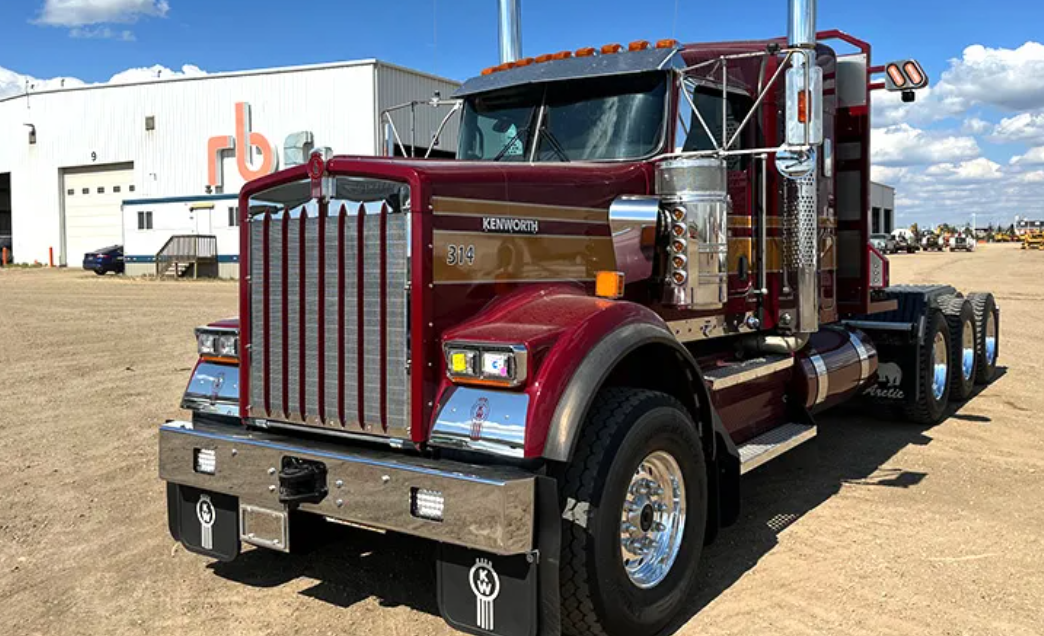Blind spots and the Ignorance of 4-Wheelers

Every day, millions of four-wheeler drivers navigate highways alongside massive semi-trucks, often without understanding the inherent dangers. These towering giants of the road come with significant blind spots, also known as "no-zones," which can easily conceal entire vehicles, leading to catastrophic accidents.
Understanding Semi-Truck Blind spots
Semi-trucks have four primary blind spots:
- Right Side: The blind spot on the right side of a semi-truck can span across two lanes and extend the entire length of the trailer.
- Left Side: Although smaller than the right-side blind spot, the left side still has a dangerous zone where a vehicle can go unnoticed.
- Rear: Directly behind the trailer, a significant blind spot can hide vehicles following too closely.
- Front: Directly in front of the truck, extending about 20 feet, is another blind spot where shorter vehicles can disappear from the driver’s view.
According to the Federal Motor Carrier Safety Administration (FMCSA), approximately one-third of all crashes between large trucks and smaller vehicles occur in these blind spots. In 2020, the National Highway Traffic Safety Administration (NHTSA) reported over 400,000 crashes involving large trucks, with 4,965 fatalities. A significant portion of these accidents can be attributed to vehicles lingering in these no-zones.
The Misconceptions of Four-Wheeler Drivers
Many four-wheeler drivers operate under the false assumption that if they can see the truck, the truck driver can see them. This misconception is dangerous. Unlike smaller vehicles, semi-trucks have large areas where the driver cannot see other vehicles, even with the use of mirrors.
A study conducted by the AAA Foundation for Traffic Safety found that 96% of motorists underestimate the truck driver's inability to see them. This lack of awareness often leads to risky behaviors such as:
- Lingering in blind spots: Many drivers fail to pass quickly or safely, staying in the truck's blind spot longer than necessary.
- Cutting off trucks: A common dangerous behavior is merging quickly in front of a truck, not realizing the driver cannot see them.
- Tailgating: Following too closely behind a truck can hide the vehicle from the truck driver’s view, increasing the risk of rear-end collisions.
The Cost of Ignorance
The consequences of these misunderstandings are severe. The FMCSA states that large trucks were involved in 11% of all motor vehicle fatalities in 2020. A significant number of these incidents could have been avoided with better awareness and understanding of blind spots.
For instance, rear-end collisions caused by tailgating are particularly deadly. Trucks require up to 40% more stopping distance than cars. A sudden stop by a truck can lead to a fatal crash for the tailgating vehicle. Similarly, side-swiping incidents often occur when a vehicle remains in the truck’s blind spot during lane changes.
Promoting Awareness and Safety
Educating four-wheeler drivers about the dangers of truck blind spots is crucial. Some essential tips for staying safe include:
- Avoid Lingering in Blind spots: Pass trucks quickly and on the left side whenever possible.
- Keep a Safe Distance: Maintain a minimum of 20-25 car lengths behind a truck to stay visible.
- Understand Turn Radii: Trucks make wide turns, often swinging left to turn right. Stay clear during these maneuvers.
- Use Headlights: Ensure your headlights are on when driving near trucks, even during the day, to increase visibility.
Takeaway
Driving alongside semi-trucks requires respect and understanding of their limitations. By staying informed about blind spots and adopting safer driving habits, four-wheeler drivers can significantly reduce the risk of accidents. Remember, if you can’t see the truck’s mirrors, the truck driver can’t see you. Stay visible, stay safe, and share the road responsibly. The awareness of these no-zones is not just a matter of rules; it’s a matter of life and death.
BLOOM SERVICES
Here at Bloom Services, Inc we pay 82% gross load, our drivers average $3,000, plus a week take home and an annual take home pay of $120,000-180,000. With many of our drivers becoming owner-operators after three years. Our program is set up to benefit good and solid truck drivers.
If you are interested in taking home over $3,000 + a week in a stellar rental or lease-purchase program. Apply right away or call our office for more information (630)-504-6126. We look forward to hearing from you.



office & Parking depot
5120 Belmont Rd Unit K, Downers Grove, IL 60515, USA
Hours of operation
Mon - Sun: 7am-5pm
